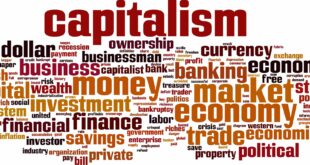One of the great paradoxes of history are the claims of imperialist politicians to be engaged in a great humanitarian crusade, a historic “civilizing mission” designed to liberate nations and peoples, while practicing the most barbaric conquests, destructive wars and large scale bloodletting of conquered people in historical memory.
In the modern capitalist era, the ideologies of imperialist rulers vary over time, from the early appeals to “the right” to wealth, power, colonies and grandeur to later claims of a ‘civilizing mission’. More recently imperial rulers have propagated, many diverse justifications adapted to specific contexts, adversaries, circumstances and audiences.
This essay will concentrate on analyzing contemporary US imperial ideological arguments for legitimizing wars and sanctions to sustain dominance.
Contextualizing Imperial Ideology
Imperialist propaganda varies according to whether it is directed against a competitor for global power, or whether as a justification for applying sanctions, or engaging in open warfare against a local or regional socio-political adversary.
With regard to established imperial (Europe) or rising world economic competitors ( China ), US imperial propaganda varies over time. Early in the 19th century , Washington proclaimed the “Monroe Doctrine”, denouncing European efforts to colonize Latin America , privileging its own imperial designs in that region. In the 20th century when the US imperial policymakers were displacing Europe from prime resource based colonies in the Middle East and Africa , it played on several themes. It condemned ‘colonial forms of domination’ and promoted ‘neo-colonial’ transitions that ended European monopolies and facilitated US multi-national corporate penetration. This was clearly evident during and after World War 2, in the Middle East petrol-countries.
During the 1950s as the US assumed imperial primacy and radical anti-colonial nationalism came to the fore, Washington forged alliances with the declining colonial power to combat a common enemy and to prop up post-colonial powers to combat a common enemy . Even with the post World War 2 economic recovery, growth and unification of Europe, it still works in tandem and under US leadership in militarily repressing nationalist insurgencies and regimes. When conflicts and competition occur, between US and European regimes, banks and enterprises, the mass media of each region publish “investigatory findings” highlighting the frauds and malfeasance of its competitors ..and US regulatory agencies levy heavy fines on their European counterparts, overlooking similar practices by Wall Street financial firms.
In recent times the rising tide of militarist imperialism and colonial wars fueled by Israeli proxies in the US state has led to some serious divergencies between US and European imperialism. With the exception of England , Europe made a minimum symbolic commitment to the US wars and occupation of Iraq and Afghanistan . Germany and France concentrated on expanding their export markets and economic capacities; displacing the US in major markets and resource sites. The convergence of US and European empires led to the integration of financial institutions and the subsequent common crises and collapse but without any coordinated policy of recovery. US ideologists propagated the idea of a “declining and decaying European Union”, while the European ideologues emphasized the failures of Anglo-American de-regulated, ‘free markets’ and Wall Street swindles.
Imperial Ideology, Rising Economic Powers and Nationalist Challengers
There is a long history of imperialist “anti-imperialism”, officially sponsored condemnation, exposés and moral indignation directed exclusively against rival imperialists, emerging powers or simply competitors, who in some cases are simply following in the footsteps of the established imperial powers.
English imperialists in their heyday justified their world-wide plunder of three continents by perpetuating the “Black Legend”, of Spanish empire’s “exceptional cruelty” toward indigenous people of Latin America , while engaging in the biggest and most lucrative African slave trade. While the Spanish colonists enslaved the indigenous people, the Anglo-American settlers exterminated them…..
In the run-up to World War II, European and US imperial powers, while exploiting their Asian colonies condemned Japanese imperial powers’ invasion and colonization of China . Japan, in turn claimed it was leading Asia ’s forces fighting against Western imperialism and projected a post-colonial “co-prosperity” sphere of equal Asian partners.
The imperialist use of “anti-imperialist” moral rhetoric was designed to weaken rivals and was directed to several audiences. In fact, at no point did the anti-imperialist rhetoric serve to “liberate” any of the colonized people. In almost all cases the victorious imperial power only substituted one form colonial or neo-colonial rule for another.
The “anti-imperialism” of the imperialists is directed at the nationalist movements of the colonized countries and at their domestic public. British imperialists fomented uprisings among the agro-mining elites in Latin America promising “free trade” against Spanish mercantilist rule; they backed the “self-determination” of the slaveholding cotton plantation owners in the US South against the Union; they supported the territorial claims of the Iroquois tribal leaders against the US anti-colonial revolutionaries … exploiting legitimate grievances for imperial ends. During World War II, the Japanese imperialists supported a sector of the nationalist anti-colonial movement in India against the British Empire . The US condemned Spanish colonial rule in Cuba and the Philippines and went to war to “liberate” the oppressed peoples from tyranny….and remained to impose a reign of terror, exploitation and colonial rule…
The imperial powers sought to divide the anti-colonial movements and create future “client rulers” when and if they succeeded. The use of anti-imperialist rhetoric was designed to attract two sets of groups. A conservative group with common political and economic interests with the imperial power, which shared their hostility to revolutionary nationalists and which sought to accrue greater advantage by tying their fortunes to a rising imperial power. A radical sector of the movement tactically allied itself with the rising imperial power, with the idea of using the imperial power to secure resources (arms, propaganda, vehicles and financial aid) and, once securing power, to discard them. More often than not, in this game of mutual manipulation between empire and nationalists, the former won out … as is the case then and now.
The imperialist “anti-imperialist” rhetoric was equally directed at the domestic public, especially in countries like the US which prized its 18th anti-colonial heritage. The purpose was to broaden the base of empire building beyond the hard line empire loyalists, militarists and corporate beneficiaries. Their appeal sought to include liberals, humanitarians, progressive intellectuals, religious and secular moralists and other “opinion-makers” who had a certain cachet with the larger public, the ones who would have to pay with their lives and tax money for the inter-imperial and colonial wars.
 Mouood Mouood English Edition
Mouood Mouood English Edition




